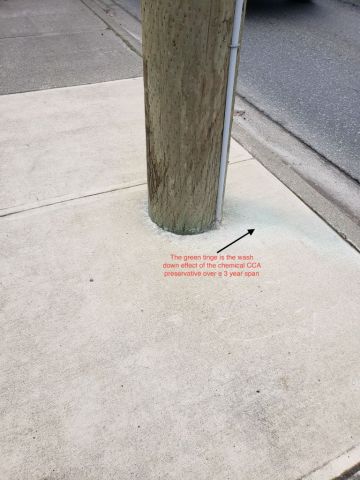The Environmental Impact of Chemicals Used to Treat Wooden Utility Poles
2024-08-06

Wooden utility poles are integral to our infrastructure, supporting electrical lines, telecommunications cables, and other essential services. To ensure these poles last for decades despite exposure to harsh environmental conditions, they are treated with various chemicals to prevent rot, decay, and pest infestation. While these treatments significantly enhance the durability of the poles, they also pose notable risks to the environment. This article will explore the chemicals used to treat wooden utility poles and their potential dangers to ecosystems and human health.
Common Chemicals Used in Utility Pole Treatment
- Creosote: Creosote is a tar-like substance derived from coal tar and is one of the oldest and most commonly used preservatives for utility poles. It is highly effective against fungi, insects, and other wood-destroying organisms. However, creosote contains many known carcinogens and polycyclic aromatic hydrocarbons (PAHs).
- Pentachlorophenol (Penta): Pentachlorophenol is a synthetic chemical used as a wood preservative. It is applied as a solution with petroleum-based carriers. Penta is effective against many pests and fungi but is highly toxic. It can leach into the soil and water, posing significant environmental and human health risks.
- Chromated Copper Arsenate (CCA): CCA is a copper, chromium, and arsenic mixture. This preservative protects wood from termites, fungi, and other pests. While it is highly effective, the arsenic in CCA is a potent carcinogen, and the chromium can cause skin irritation and respiratory problems.
Environmental Dangers
- Soil Contamination: When treated poles are placed in the ground, the chemicals can leach into the surrounding soil. Over time, this can lead to the accumulation of toxic substances in the soil, adversely affecting plant life and soil organisms. Arsenic, chromium, and PAHs in the soil can inhibit plant growth and harm beneficial microorganisms.
- Water Pollution: Rainwater can wash chemicals from treated poles into nearby water bodies, contaminating streams, rivers, and groundwater. This pollution can severely affect aquatic ecosystems, harming fish, amphibians, and other wildlife. Bioaccumulating toxic substances in the food chain can lead to long-term ecological damage.
- Air Pollution: During the application and weathering of these chemicals, volatile organic compounds (VOCs) can be released into the air. These emissions contribute to air pollution and can have adverse health effects on humans and animals, including respiratory issues and increased cancer risk.
- Impact on Wildlife: Animals that come into contact with treated poles or contaminated soil and water can suffer health problems. For instance, birds that perch on treated poles can absorb toxic substances through their feet, while mammals that dig in contaminated soil can ingest harmful chemicals.
Human Health Risks
- Direct Contact: People who work with treated poles, such as utility workers and construction personnel, risk exposure to toxic chemicals. Prolonged skin contact or inhalation of dust and fumes can lead to serious health issues, including cancer, neurological disorders, and respiratory problems.
- Indirect Exposure: Communities near utility poles treated with these chemicals can be exposed to pollutants through contaminated soil, water, and air. The ingestion of contaminated water or produce grown in contaminated soil can pose significant health risks to residents.
Mitigating the Risks
To mitigate the environmental and health risks associated with chemically treated utility poles, several strategies can be employed:
- Alternative Materials: Using steel, concrete, or composite poles can reduce reliance on treated wood.
- Safer Chemicals: Developing and using less toxic wood preservatives can minimize environmental impact.
- Protective Barriers: Installing physical barriers around treated poles can prevent leaching of chemicals into the soil and water.
While chemically treated wooden utility poles are crucial for maintaining essential infrastructure, the chemicals present significant dangers to the environment and human health. By understanding these risks and exploring safer alternatives, we can work towards more sustainable and responsible solutions for utility pole treatment.
